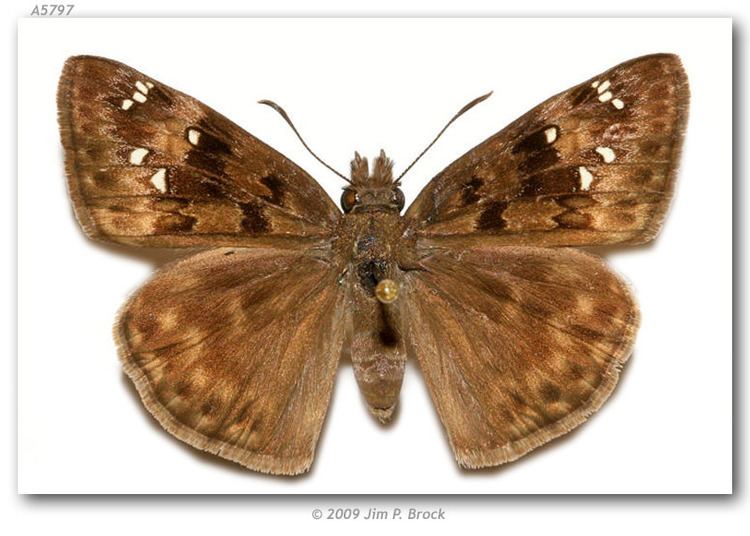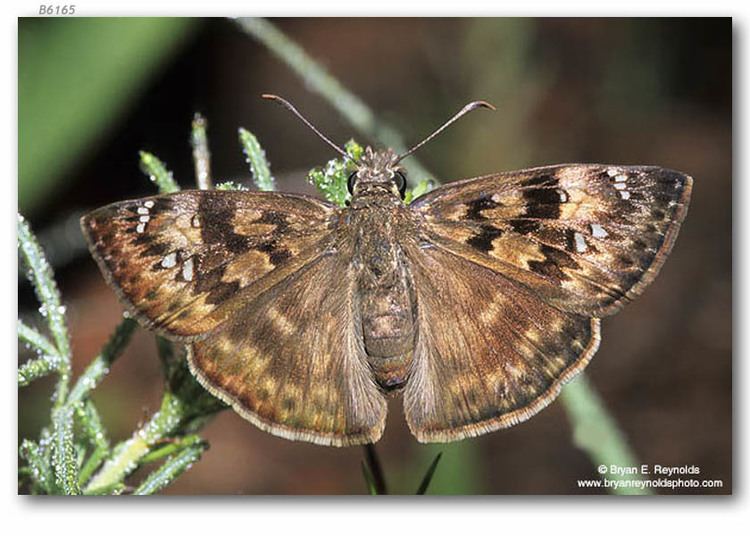Family Hesperiidae Scientific name Erynnis horatius | Tribe Erynnini Rank Species | |
 | ||
Similar Duskywing, Erynnis juvenalis, Erynnis baptisiae, Thorybes bathyllus, Erynnis brizo | ||
Erynnis horatius, the Horace's duskywing, is a butterfly of the family Hesperiidae. It is found from Massachusetts, west to eastern South Dakota, south through most of the eastern United States to Florida, the Gulf Coast, and southern Texas, south in the west through south-eastern Utah, Colorado, north-eastern Arizona, and New Mexico.

Fringes are brown. Upperside of male forewing is dark brown with little contrast and no white overscaling. Upperside of female forewing is light brown with a contrasting pattern and large transparent spots. Underside of hindwing is usually without two spots below the apex. The male has a costal fold containing yellow scent scales; the female has a patch of scent scales on the 7th abdominal segment. The wingspan is 36–49 mm.

There are two generations in the north, with adults on the wing from April to September; there are three generations in the deep south and Texas, with adults on the wing from January to November. Adults prefer open woodlands and edges, clearings, fence rows, wooded swamps, power-line right-of-ways, open fields and roadsides
The larvae feed on young leaves of red and white oaks, including Quercus phellos, Quercus velutina, Quercus ilicifolia, Quercus nigra, Quercus stellata, and Quercus virginiana. Adults feed on various flowers of plants up to about 4.5 feet tall, including dogbane, buttonbush, sneezeweed, goldenrod, peppermint, boneset, and winter cress.
